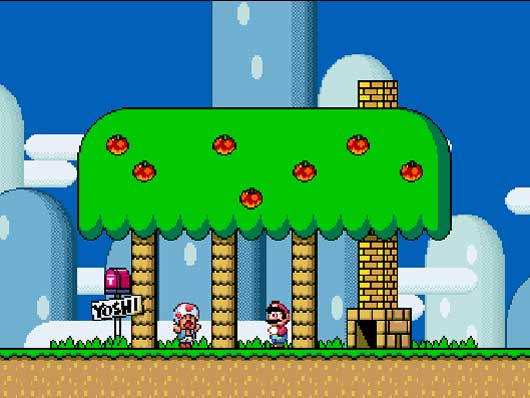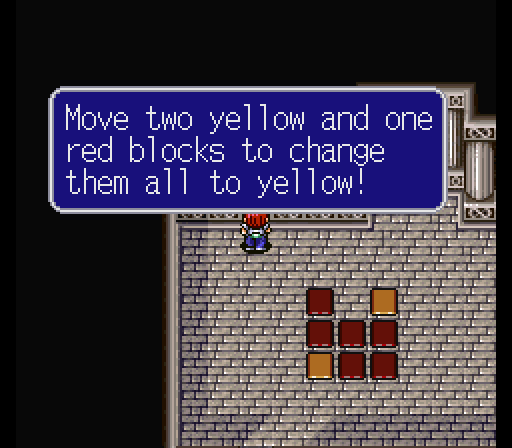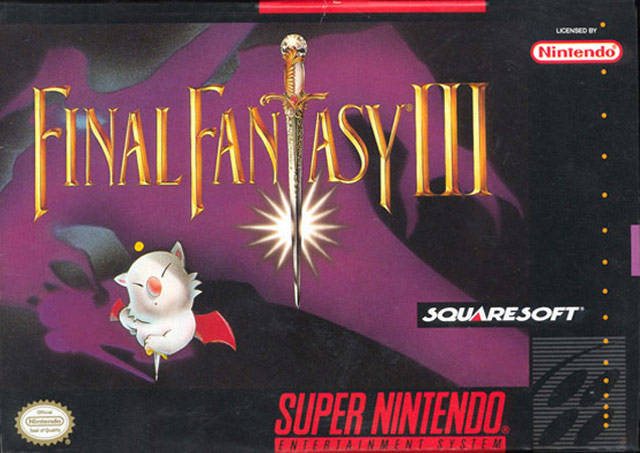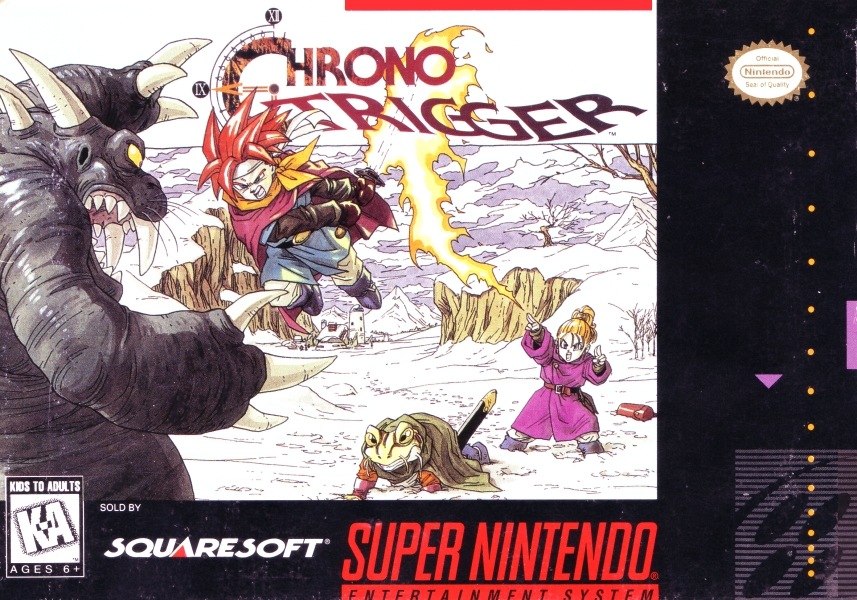First,
let me apologize for being away so long.
Work is stealing my soul as well as my time. Anyway, somehow, I managed to get this piece
composed this piece, so let’s talk video games!
Okay, the title
of this article may set off a few people’s alarm bells.
First, let me tell everyone to relax.
This isn’t going to be a rant about why the SNES or Sega Genesis is the
best system ever and the game industry was better when during the 16-bit
generation. Some of my favorite games
are from later generations, especially the PS2.
However, I think that in the rush to improve and make graphics more photo-realistic,
music more symphonic, and gameplay more complex, that something important has
been lost. I think that many games have
lost their way because there is just so much that can be done with modern
technology. Some people may argue
against that. That having a huge sandbox
to explore is amazing for game development, offering near limitless
possibilities. However, in my mind,
knowing ones limitations is just as important as having the boundless freedom
to explore and do as one wish’s.
 |
| Okay, we've got all this space to design! So, umm...where do we actually go? |
And really,
that’s why I have such admiration for the 16-bit era. Its limitations. The games in the 16-bit era managed to gain
enough power as opposed to the 8-bit that they could expand and push the
boundaries of what games at the time could do, creating prettier sprite based
graphics, gameplay and AI that was more complex, and music that was less
pixelated and more symphonic. However,
there were still clear limits to what could be done and the game designers had
to work within those limitations to get the best out of their games without
making them impossible to fit onto the console.
This meant that programmers had to put a great deal more care into their
game design.
 |
| Most of the time a great deal of care was put into game design...translation...sometimes fell by the wayside. |
With
increased space, stories could become more complex and scripts more well
refined. However, because of the
limitations, the story was carried more on the weight of the script rather than
the performance of those reading it. It
allowed the players to create their own voice or interpret the script in their
own way. Likewise, composers had some
space to flex their musical muscle, however music couldn’t be ripped from
outside sources and had to rely on the sound chip within the console, so most music
had to be original or at least converted in such a way that was pleasing to
hear. Along that same line, it did not
take scores of orchestras to record the music or dozens of composers, as what
could be done was so limited. And most
importantly, the sprite based graphics of the 16-bit era used graphical tricks
that were cheap and easy to implement as opposed to the time consuming process
of 3d modeling. A single 3d model can
take days, or even weeks, to create, render, rig to look and act natural, and
even more time if it needs to emote.
However, with sprite based gaming, a set of pixels just needed to be
altered and the character could look like they were laughing, crying, in pain,
exhausted, etc. These graphics were
pleasing to the eye and allowed much more expression than 8-bit sprites, which
were limited in color and detail.
However, they were not so complicated that it took an excessively long
time to create them.
 |
| Remember when games could look pretty without a billion polygons? Yeah...those were good times... |
The point I
am trying to make with this tirade is that instead of bloated budgets for
gaming which focused more on graphical fidelity and realism or on game design
that is complex and unwieldy, 16-bit games had to be lean, using simple tools
to achieve great feats. The two Lufia
games on the SNES, for example, had some of the most devious logic puzzles in
all of gaming and they managed to do it using a simple system of lifting,
pushing, and pulling objects. In modern
games, however, a puzzle game without a physics engine would be laughed out of
the room. What is easier to design and
less prone to hiccups? A physics engine
that has thousands of variables or a simple system of pushing, pulling, and
lifting that is based on a simple grid based puzzle system?
 |
| Simple, devious, and without the need for a physics engine...Why aren't we making more puzzles like this again? |
If nothing
else, modern games have also proven how advances in technology can make games
more beautiful. People have given Heavy
Rain, Modern Warfare 3, and other games which focus on realism heavy props for
their graphical power. However, how many
systems can use those without delays?
How many computers can play graphically taxing games like Diablo 3 or
Starcraft 2 without significant upgrades?
And how ridiculous will these purported realistic graphics look in
twenty years when graphics are even more advanced? Worse yet, however, is the propensity for
excessive cut scenes. Now, there is
nothing wrong with cut scenes in games. They can move along the plot or pump up the
player for a confrontation, however using them as a crutch, focusing on
graphics over gameplay or storytelling, is folly. I think that an emphasis on using the latest
toys and making things look pretty has made people forget what the core of game
design is all about. Substance over
graphical flair.
 |
| Yes, Metal Gear 4, you're very pretty...now how about some gameplay with my 30 minute cut scenes? |
A number of
people may argue against the idea that limitations are a necessary part of good
game design. Like how such limitations will
hamper a game’s fun factor by hurting atmosphere, gameplay, music, etc. However, take a look back at the game industry
during the early 2000s. Many of the
games which endure are not the realistic ones, but those that use cartoony,
cel-shaded, or alternative graphical schemes to the more realistic ones. Jim Sterling made a brilliant argument on the
Escapist about this, saying that the best games for HD televisions were not the
grim, gritty, and realistic, but the colorful, cel-shaded, and lively. Games like Rogue Galaxy, Killer 7, and Final
Fantasy Tactics still look as good today as the day they came out. And many games thrive on limitations. Horror games in particular. In Silent Hill and Silent Hill 2, there were
a huge amount of limitations that needed workarounds for the games to function
properly. Pop in graphics were
common. So, to hide the pop in, they
world was draped in an eerie mist or in darkness or in snow that hid the
monsters and made the players feel both alone, and surrounded, creating an
atmosphere of crushing dread. Forcing
games to work within limitations often brings out the best in them. By comparison, the modern Silent Hill games
after Silent Hill 4 have been lacking some of the atmosphere of the previous
ones, because the monsters have to be so well defined in their grotesqueness,
the graphics need to pop and be eye catching, and the voice acting has to be
spot on. There is no room left for the scary atmosphere created by the mist,
snow and darkness of previous games.
Although, some people do seem to be learning from such mistakes, as
games like Silent Hill: Shattered Memories or Silent Hill: Downpour indicates.
 |
| Would you believe one of the most terrifying experiences in gaming was born of necessity rather than graphical fidelity? |
Others may
argue that it would be impossible to create 16-bit style games with the same
sensibilities that we have now and that they are a relic because of their
limitations. However, I also dispute
this claim as well. Modern programming
teams have created 16-bit style games using tools such as RPGmaker or other
game engines to experiment with 16-bit games in ways that, while not
implemented during the 16-bit generation itself, are still ground breaking and
creatable without a bloated budget. To
the Moon, for example, is a game that looks, on the surface, like a Final
Fantasy 6 style RPG. However, it
actually is a graphic novel style of game that is more closely related to a
point and click adventure. It focuses on
tight writing and the emotional poignancy of the graphics and music to deliver
a moving experience. Lone Survivor, on
the other hand, creates a claustrophobic 16-bit world that uses tricks learned
from the 16-bit generation to inspire a world of surreal horror which is
genuinely terrifying and unsettling. So,
one question I might ask is that, if these games are easier to create than
mainstream games, can be just as much fun, can experiment more than their
contemporaries, and are cheaper to both make and for customers to buy, then…why
don’t we see more 16-bit revivals? Lone
Survivor is available on Steam and To the Moon from Freebirdgames.com but both
are somewhat niche titles that have not met a huge level of financial
success. However, 16-bit games in the
modern era that achieve success are growing less rare.
 |
| 16-bit. Modern Sensibilities. Damn scary. We need more of this. |
A number of
16-bit style games as well as other games that embrace their limitations have
been created recently that are both innovative and successful. And, perhaps most importantly, exist outside
the bloated AAA games market. Cthulhu
Saves the World was a game that was built to look like a 16-bit RPG and was
heavily praised for its writing, game design, graphics, and music, all of which
used the same tricks of its forbearers, such as swapping out sprites to emote
or create unique appearances and looped animations for walking or simple
expressions. Terraria is a beloved
exploration based action RPG which uses a sprite based 16-bit aesthetic and
game design to create an engrossing experience.
More surprisingly, it was crafted by only 2 people over 4 months. Even the graphically impressive Dear Esther
knew its limitations and gave people the freedom to move, but to find the
story, left them with little else they could do. These games, have met with critical and
commercial success precisely because they used their limitations to create a
unique experience and focus on a specific aspect of their game design, be it
story with Dear Esther, customization and exploration with Terraria, or solid
game mechanics with Cthulhu saves the world.
 |
| Four months in the making and 200,000 sold in its first week. Take note, AAA developers. |
One of the
reasons I love 16-bit games and games from the PS1 and PS2 over the PS3 or high
end PC games is that they embraced their limitations to a degree and knew when
to stop. Their scripts had to be
tighter, their game design more innovative, and their music less hackneyed and
repetitious. Often times, modern game
design tries to do everything and fails to really stand out or fails to be
enjoyable as a whole. Granted, this is
only my opinion, however, I think that to forget ones limitations is to invite
folly. You do need space to
stretch. My favorite game, Odin Sphere,
uses sprites that could never fit on a 16-bit system and would only really be
possible on the Playstation 2 or greater.
However, if you get too much space, you probably won’t know what to do
with it all.
Bloated game design also raises the
bar for entry. In the days of the
Commodore 64, people could create their own homebrew games that they could
sell. While I believe the Commodore 64
was very limited, it showed that regular people could learn programming and
build games. Modern AAA game design
requires up to 4-6 years of school in a specific skill, such as modeling,
photoshop, etc. to even get an entry level position. However, if something like Terraria is any
indication, it is possible to build and put a game on the market in less than
half a year with simpler tools that anyone can use.
Ultimately, I don’t think the game
industry needs to return to its 16-bit roots.
I love 16-bit games and I’d love to see more. I’d love for Actraiser, or Terranigma, or
Final Fantasy 6 to return to grace, but they’ve had their time in the sun. We need to keep moving forward. However, forcing people to create a game that
needs a million units sold to make enough money to repay all the time and
effort put into it is just not good business.
Limitations on what game developers can do or CHOOSE to do could lower
the bar for entry into the games industry, allow innovation, as cheaper games
give more opportunity to try new ideas, and give them a tidy profit that
doesn’t require a huge team to work on.
This is why Indie games are so good for the industry. They know their limits and work within them
to create the best experience possible.
While I am not sure exactly where, I do recognize that the web series
Extra Credit has tackled this issue far better than I from a business
perspective, but it bears repeating.
 | |
| These games had their time in the sun. I don't think the world needs to return to 16-bit. |
 |
| Yet, we can make games like this much easier now than in the 1990s. Why don't we make more? |
On the whole, I think that 16-bit
games exemplify this kind of ideal perfectly.
Most took no more than a year or two to create, as opposed to the
abysmal 2-5 year cycle of modern AAA games, most used simple concepts, such as
turn based combat or simple eight directional over head movement to experiment
with established formulas and create new ones, and it gave aspiring artists and
composers a chance to stretch their legs without having to work themselves half
to death. And if the game industry is to
survive, major publishers need to start embracing these kinds of design
practices. They need to give AAA style
attention and funding to smaller games which can be produced quickly, but which
also have the necessary quality and fun factor behind them. Games which embrace their limitations to do
certain things very well. I don’t think
all games need to be like this, in fact the landscape of gaming would change
for the worse if that were the case, but publishers should at least dabble in
it. Otherwise, the game industry will
have a revolution where the AAA market is toppled by the indie developers and
digital distributors. Which…on second
thought, might not be too bad for us, the consumers.
Once again, any material that people believe I have used
inappropriately or without permission, please contact me and I will address the
issue. Otherwise, I hope some fun was
had reading my take on games and their limitations.